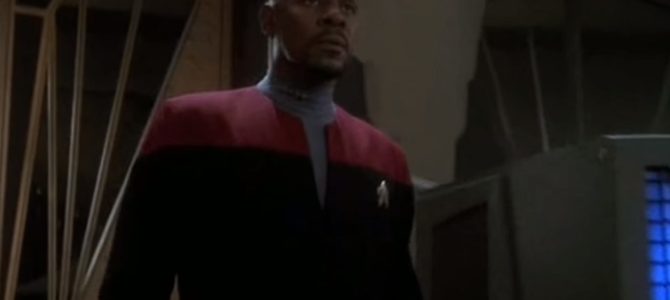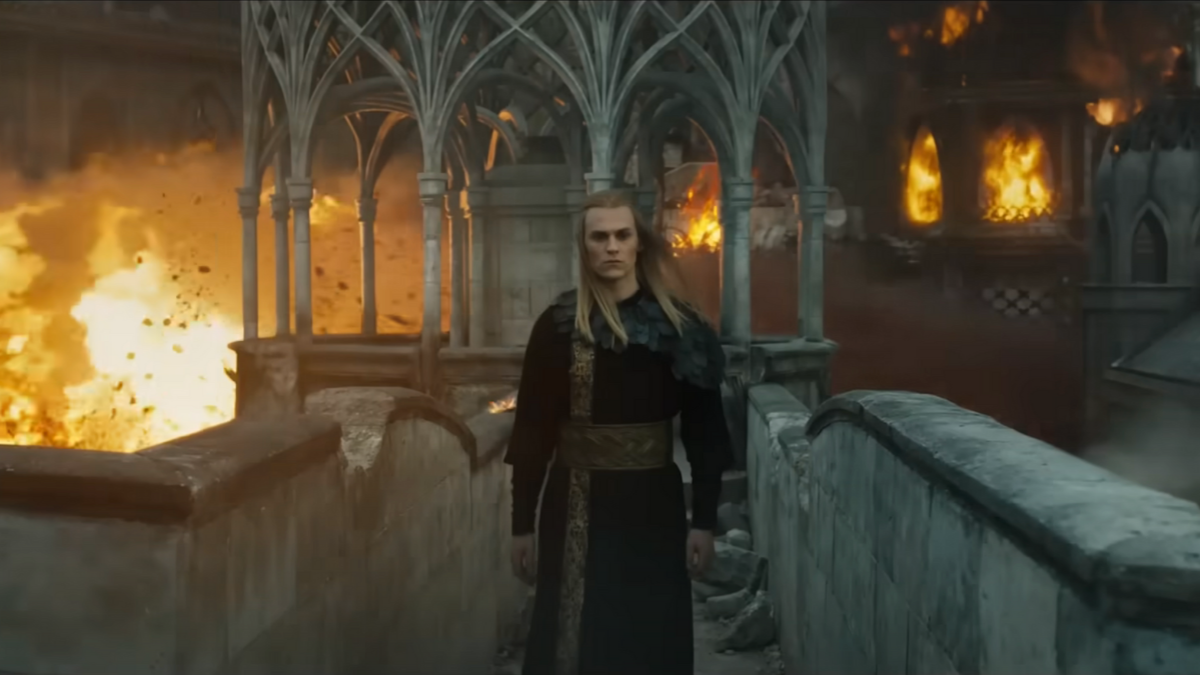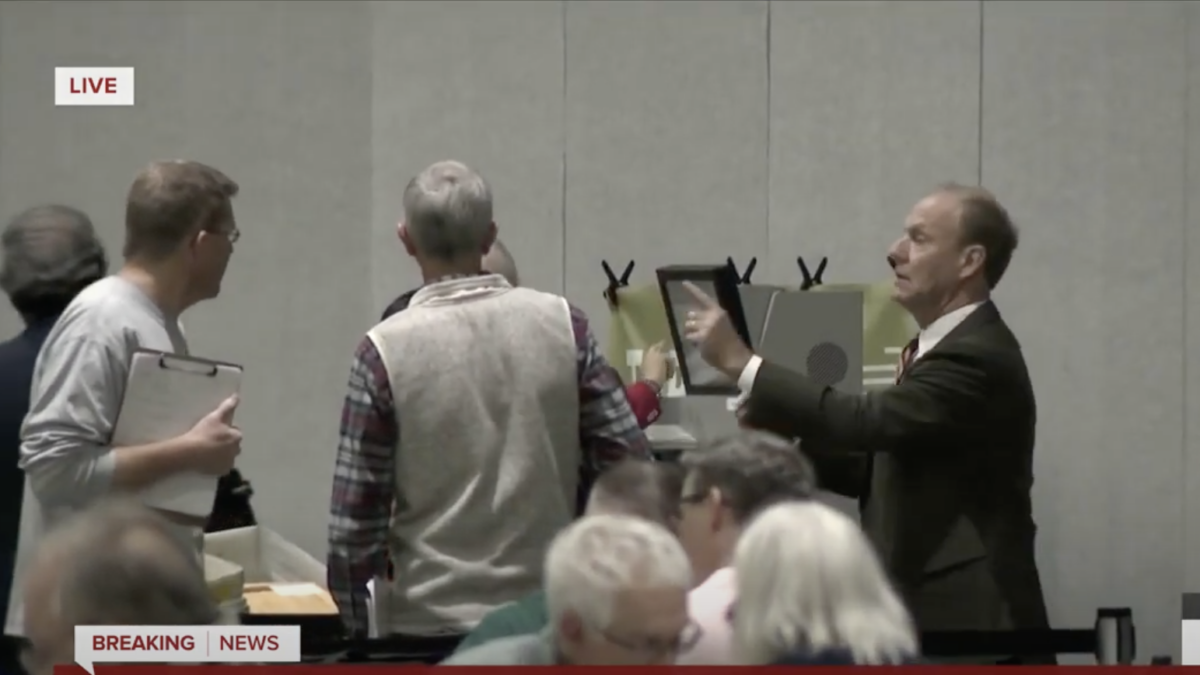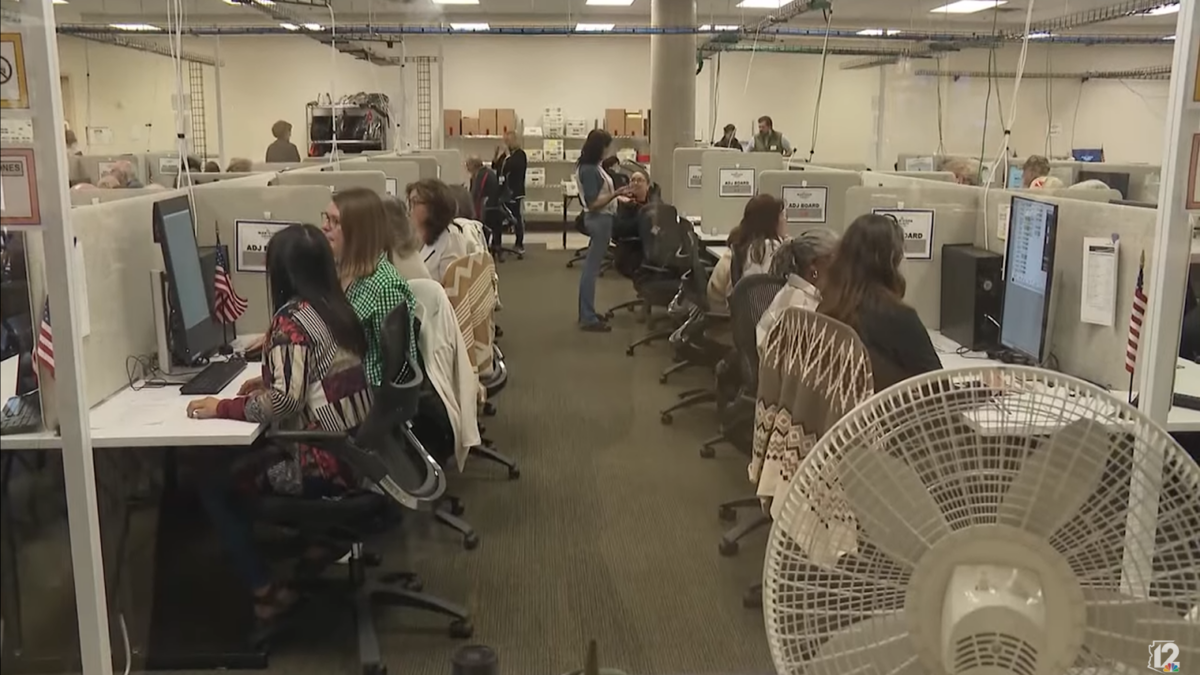
Star Trek is among the most prominent works of science-fiction television. The Star Trek universe is the brainchild of the late Gene Roddenberry and has, with a few interruptions, been present in our TV shows and feature films since 1966.
Among Star Trek aficionados, debate is always lively about which show or movie is best. These arguments have been the basis of nerd-fights for decades and, as matters of taste, will never be resolved. But any serious fan of the world Roddenberry built must rank “Star Trek: Deep Space Nine” as among the best incarnations of the Star Trek universe.
Part of what makes it so good is that it sidelines many of the themes that animated Roddenberry’s original creation. The original series and “Star Trek: The Next Generation” were both set in a post-scarcity utopia. After a destructive nuclear war, humanity put aside its baser instincts and evolved into the peaceful, open-minded people Roddenberry wished we were. Hunger was unknown, and money was eliminated. People in Starfleet served—for free—aboard immensely powerful warships that did not make war but explored the galaxy peacefully for pure scientific inquiry. They were also nearly all atheists.
Some of this world-building fell apart immediately. There was, for example, often talk of trade negotiations and occasionally “credits” were mentioned. It is natural that some of these elements from real society would creep back in because while humanity’s traditional motivations—money, sex, land, power, and religious disputes—lie at the heart of much human ugliness in the real world, they are also essential to good storytelling.
If everything in the United Federation of Planets is happiness and sunshine in a land of plenty, why even leave the house? With “Deep Space Nine” now available on Netflix, it is interesting to see how these ideas and plots have held up after 25 years.
A Story of Fathers and Sons
“Deep Space Nine,” which premiered on January 3, 1993, departs from this worldview in several significant ways, most of which become clear immediately in the two-part series premiere, “Emissary.” The action begins with Commander Benjamin Sisko (Avery Brooks) taking a new assignment on the frontier. Sisko, a New Orleans-born widowed war veteran with a teenage son, is reluctant to accept the assignment and has considered leaving Starfleet altogether.
The show has been described as the story of a black single father raising a son in space, and that is certainly a large part of it. Sisko’s race is not a huge factor in the show, but writers then and afterward have remarked at the significance of casting a black man as the lead actor and of the importance of depicting him as a loving, involved father.
The relationship between Sisko and his son Jake (Cirroc Lofton) is unusually prominent in a show about space exploration and (in later episodes) war. Part of this is bound up in the Federation’s inexplicable policy of quartering families on ships and in starbases, a policy that caused Sisko’s wife’s death when their ship came under attack three years earlier. But it also adds the potential for greater depth to the show’s plotlines, dealing with how spouses and children are affected by the demands on Starfleet officers.
The station on which they are to be based is, from the beginning, a huge part of the show. It orbits the planet of Bajor, an independent world that has just emerged from a 50-year resistance campaign against the Cardassian Union, a military dictatorship that was first introduced as a rival to the Federation in “Star Trek: The Next Generation.”
After Bajor’s independence is won, the Cardassians agreed to leave the planet and the station, extracting everything of value as they depart. As Sisko arrives, the planet’s people are suffering and the station is barely functional. He depends heavily upon his new chief of operations, Miles O’Brien (Colm Meaney), to get the place up and running and adapt the often unfamiliar alien technology to their own uses.
A Resistance’s Struggle to Govern
Bajor’s story resembles some of those told in the headlines of the day as the Soviet Union crumbled and those who had fought against it for years were compelled to move from resistance to leading the nations that had thrown off the oppressor’s yoke. As history has shown countless times, many successful rebels find that their skills do not translate to peacetime governance and nation-building.
So it is with Bajor. When Sisko meets his Bajoran liaison, Kira Nerys (Nana Visitor,) she is already feuding with the government on the surface and convinced that, without the struggle for independence to unify them, Bajor will soon collapse into civil war. The only person who might bring them together is Kai Opaka, Bajor’s religious leader, who refuses to emerge from seclusion and involve herself in politics. Meanwhile, life on the station is falling apart as the various merchants who plied their trades there sense the threat of upheaval and begin to depart for less unstable environs.
One major issue roiling Bajoran politics: the role of the Federation. Many Bajorans are reluctant to invite a new galactic superpower into their region, having just forced out the old one. Others see the Federation as more benevolent than the Cardassians and strong enough to prevent the old enemy sneaking back in through the back door. Again, there are echoes of 1990s geopolitical arguments about the expansion of the North Atlantic Treaty Organization and the European Union into the former Warsaw Pact nations.
The Reluctant Hero
All of these problems force Sisko into the archetypal role of reluctant hero. Meeting with Captain Jean-Luc Picard of the Enterprise in a cross-over appearance, Sisko is fairly explicitly told that the Federation’s goal is for Bajor to eventually petition for membership.
His feelings closely resemble Stanley Baker’s character in the 1964 film “Zulu”: he is not interested in heroics, nor in grand schemes. As Baker said, portraying Lt. John Chard of the Royal Engineers, “I came here to build a bridge.” Sisko’s take is similar: he wants to preside over a remote space station, not change the world.
Convincing the merchants to stay becomes easier when he and Odo (René Auberjonois), the shape-shifter the Bajorans employ as head of security, capture a young thief in the act. The boy is Nog (Aron Eisenberg), the nephew of Quark (Armin Shimerman), the Ferengi owner of a local gambling den. In return for his release, Quark agrees to stay on and encourage other merchants to do so.
Healing Bajor’s growing divides is a thornier problem, and gives the viewer the first glimpse into the significant role Bajoran religion will play in the show. Sisko travels to the surface to meet the elusive Opaka, who is eager to meet with him and insists he has a large role to play in Bajor’s future.
She shows him an Orb, which Bajorans believe was sent by the prophets, and immediately triggers a vision of Sisko’s past. (The terminology here is strange. The “orb” is actually hourglass-shaped and the “prophets” are not prophets as we normally use the term but actually the Bajorans’ nameless gods.)
The Orb is one of several such artifacts, the only one kept safe from Cardassian confiscation during the occupation. Opaka tells Sisko, whom she addresses as “emissary,” to take the Orb, placing a shocking amount of trust in someone she just met. He agrees, and back at the station asks his science officer, Jadzia Dax (Terry Farrell), to analyze it.
She does, comparing its properties with tales from ancient Bajoran history to come up with a guess as to the region of space in which the Orb originated. (Odo’s mysterious origins also trace back to that region and his backstory and Dax’s are hinted at here and will be explored further in future episodes).
The Celestial Temple
Sisko knows the Cardassians are also searching for the secret of the Orb’s origin, loitering nearby ready to swoop in at the first sign of weakness, much like the British during Ireland’s civil war. Odo sabotages their sensors so Sisko and Dax can sneak past them in a small ship. They arrive at the coordinates and encounter a wormhole—a shortcut to a distant region space. Wormholes are thought to be possible within our current understanding of physics, but none has ever been observed. In the Star Trek universe, they pop up often but are unstable.
This wormhole is different and, venturing in, Sisko and Dax discover it to be the home of the Bajoran prophets (whom the rigidly atheist humans on the show now insist on calling “the wormhole aliens”) as well as a connection to the other side of the galaxy, a place none of the nations on the show have ever explored. Through mysterious means, the prophets send Dax back to the station and interrogate Sisko about himself, his people, and the nature of linear time, which they apparently do not experience.
It devolves into a session on the psychiatrist’s couch, albeit with shrinks who have never met a human before. They probe Sisko’s thoughts and question why he is obsessed with the past—specifically, why he fixates on his wife’s death. It is partly psychotherapy and partly a discussion of the nature of space-time.
Meanwhile, the Cardassians catch on and follow Sisko down the wormhole in a ship captained by Gul Dukat (Marc Alaimo). Dukat, the former colonial administrator of Bajor, will become one of the most compelling villains in the Star Trek universe, and a deeply nuanced character. For now, he just seeks a way back into power and to keep the Federation from getting to the secrets of the Celestial Temple before his people do. As his ship enters, the prophets slam the door and the wormhole vanishes.
The Creation of a New Crossroads
Back on the station, everyone senses the importance of the passage through space. The Cardassians are incensed at the disappearance of their ship, which they deem an act of war. Kira, meanwhile, works with O’Brien to shift the massive station out of orbit and toward the wormhole, seizing the strategic location that she senses immediately could be an entrepôt of commerce and the salvation of her people’s economy (again, the theme of money and trade separates this series from previous Star Treks).
The wormhole aliens satisfy themselves to Sisko’s worthiness and release him. His tiny ship emerges from the reopened wormhole towing the disabled Cardassian cruiser, a humiliating demonstration of the shift in power in the region. Sisko has also satisfied his own doubts and agrees to stay on as commander of the newly important space station. The station’s merchants, following Quark’s example and sensing the explosion of trade about to occur, do likewise.
New shows often have a rough first season as writers struggle to develop nuance for one-dimensional characters. This is somewhat true of “Deep Space Nine,” but far less so than other shows of its type. It benefits, perhaps, from being set in an already fleshed-out fictional universe and with one character (O’Brien) who had already been developed on “Star Trek: The Next Generation.” But its success as a series, as episodes to follow will show, is built also on the reintroduction to Star Trek of classic human motivations, even if the characters motivated by them are almost always non-human.









